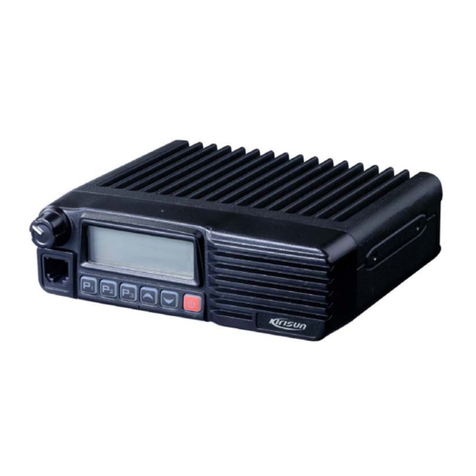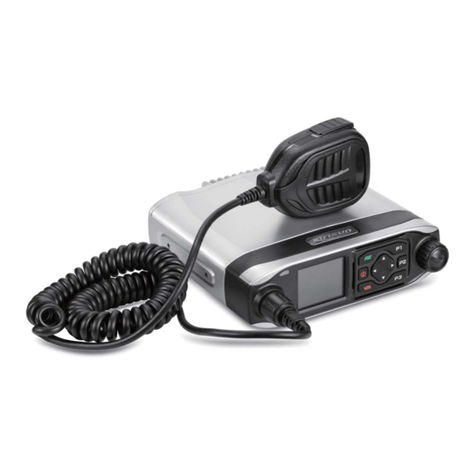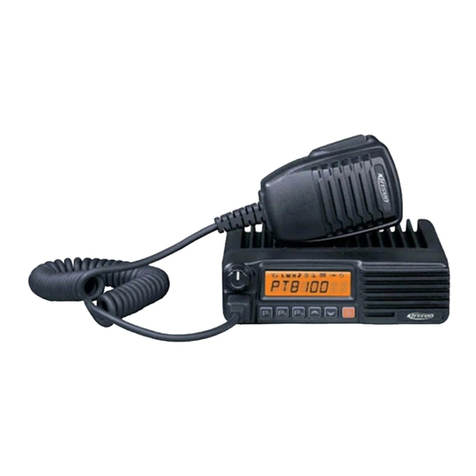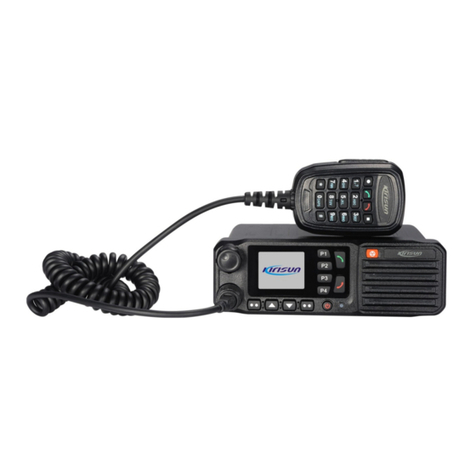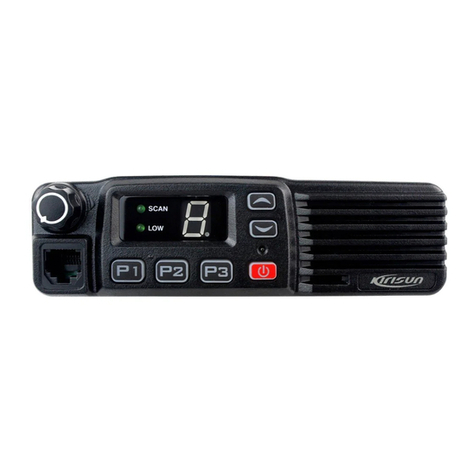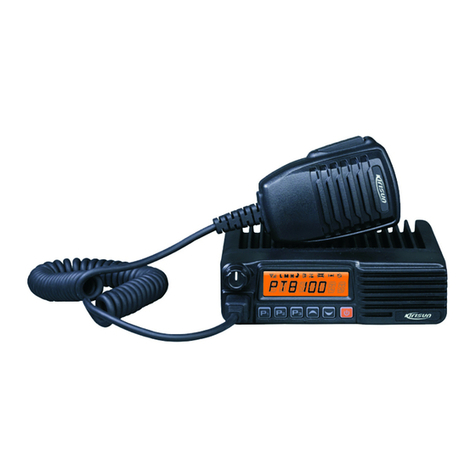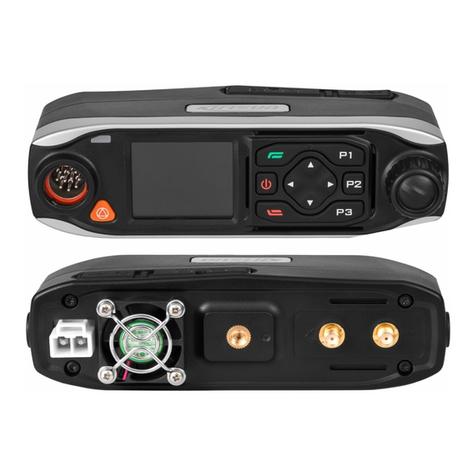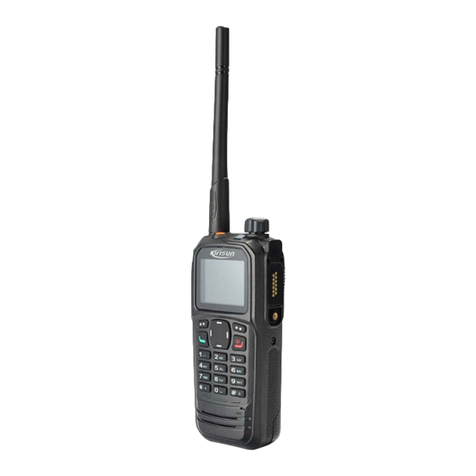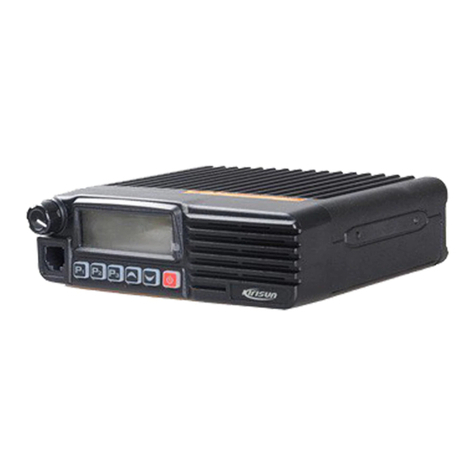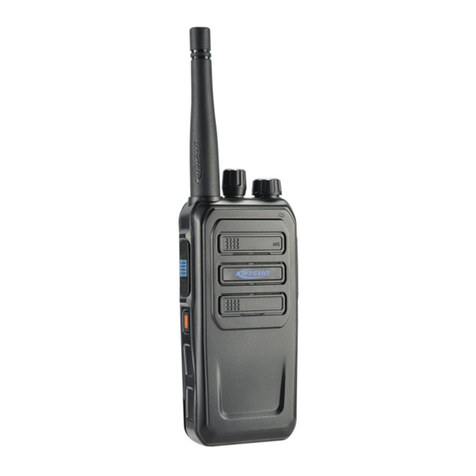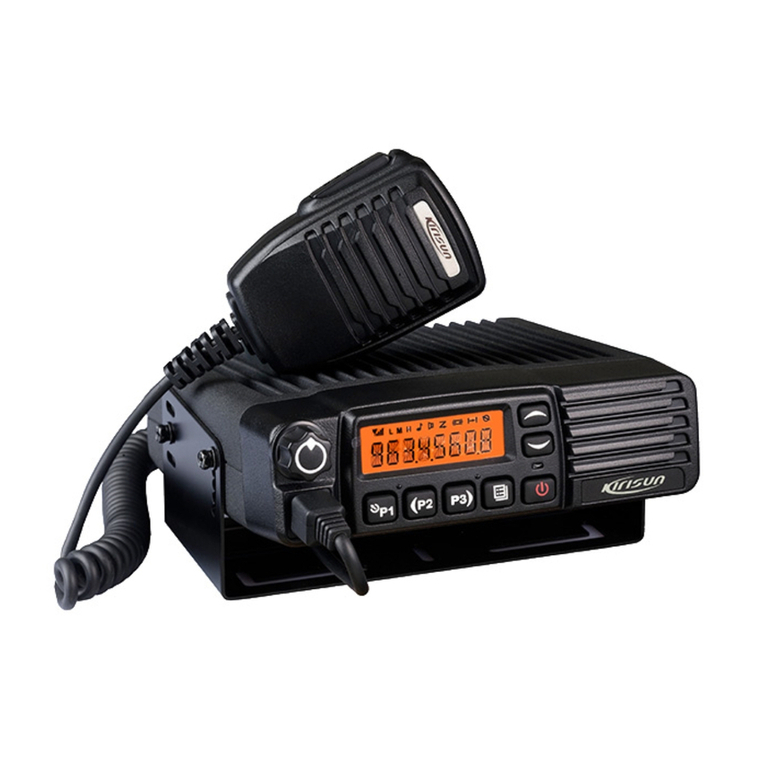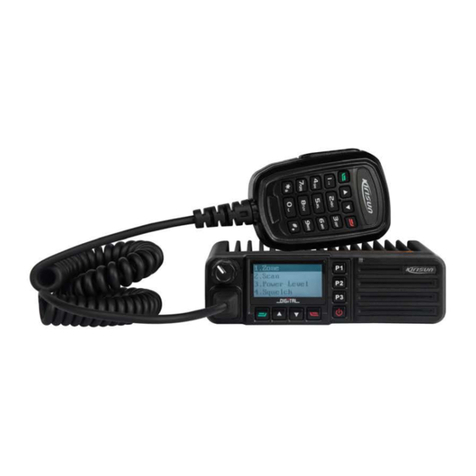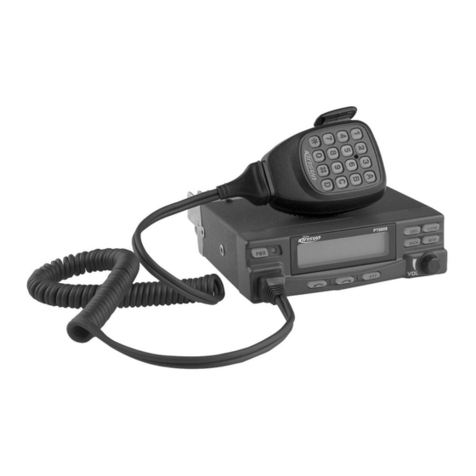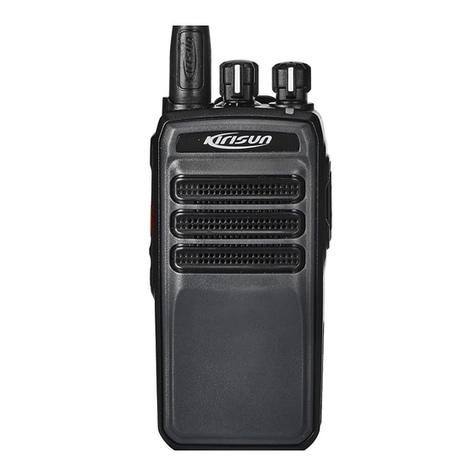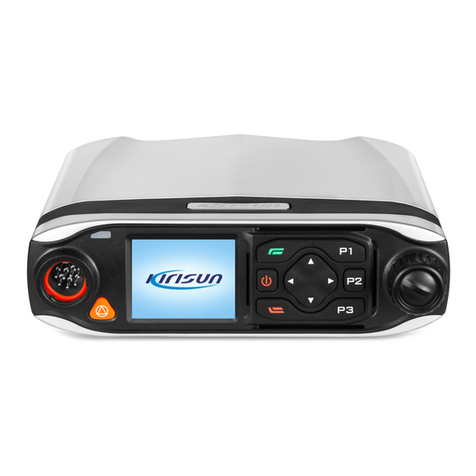
PT8000 Service Manual
7
36 INT P45 I Power Detect Input
37 TXD P66 O RS-232C Output
38 RXD P67 I RS-232C Input
39 BLC P65 O Reserved
40 8TC P64 O Transmitting Power Control H: on
41 8RC P63 O Receiving Power Control H: on
42 APC/TV P31 O(PWM)
TX: Automatic Power Control Output
RX: BPF Tuning Output
43 SBC P30 O Main Power Switch Control H: on
44 TXGSW P36 O Tx Valve Control L: Tx
45 PA P32 O Public Address Control H: PA
46 AF_MUTE P13 O Mute Control L: AF Mute
47 MIC_MUTE P12 O Mute Control H: MIC Mute
48 AFCO P11 O
AF Power Amplifier Control
L: Power Amplifier On
49 TI P10 I(A/D8) QT/DQT Signal Input
50 RSSI P00 I(A/D7) Signal Strength Input
51 BUSY P01 I(A/D6) Busy Signal Input
52 TEMP P02 I(A/D5)
Power Amplifier Temperature Protection
Input
53 KEY2 P03 I(A/D4) Keypad Input
54 KEY1 P04 I(A/D3) Keypad Input
55 PTT P62 I
Press [PTT] to input, Connect R0 with
TXD
56 NC Connect Pull-down Resistor with VSS
57 NC Connect Pull-down Resistor with VSS
58 VCCN P06 O(D/A0)
Frequency Voltage Regulation Output
VCCN
59 AVSS - Connect with VSS
60 DTMF P07 O(D/A1) D/A Output: DTMF/BEEP Output
61 VREF - Connect with AVCC
62 AVCC - CPU Power 5V Input
63 MAXAF P37 O
Max. Alarm Volume Control Switch
H: Controlled by Volume Switch
L: Max Volume at Emergency Alarm
64 WNTC P35 O
Wideband/Narrowband Control
H: Wideband L: Narrowband
Table 4.4 Function Description of Semiconductor Components
Position
Mark Model Function Description
IC5 HT9172 DTMF decoder chip
IC12 PST9140NR MCU reset circuit
IC13 NJM2902V MIC amplification, limitation, filtering
IC3 MB15E03SL Frequency synthesizer
IC4 NJM2904 APC, Voltage comparison, driving
IC6 TA31136
Rx 2nd local oscillation, 2nd IF amplification,
limitation, demodulation, and noise amplification
IC9 NJM2902 Rx demodulated signal amplification and filtering
IC8 NJM2902 Rx CTCSS/DCS signal amplification and filtering
IC11 R5F212A8 MCU
IC15 AT24C08
E2PROM, memorizes channel frequency data,
function setting parameters, and adjusting status
parameters
IC7 TDA1519C Rx AF power amplification
IC11 RA30H Tx final power amplification
IC17 NJM78L05 5V voltage regulation output
IC16 TA7808S 8V voltage regulation output
Q9 DTC144EE APC control switch
Q12 2SK508NV Rx VCO oscillation circuit
Q14 2SC4617 VCO power filter
Q11 2SC5108 Rx 2nd local oscillation frequency multiplier circuit
Q16 2SK1829 Rx high power amplifier gain control switch
Q18 3SK318 Rx high power amplifier
Q19 3SK318 First mixer
Q1 2SC5108 VCO buffer amplifier
Q20 2SC5108 1st IF amplifier
Q21 2SC4617 Rx noise amplifier
Q22 DTC144EE Wideband/narrowband noise toggle switch
Q23 DTA144EE Rx wideband/narrowband frequency discrimination
toggle switch
Q29 DTA144EE Rx wideband/narrowband toggle switch
Q30 2SK1824 Tx wideband/narrowband toggle switch
Q27 DTC144EE Beat shift control switch
Q33 2SK1824 Rx AF mute switch
Q45 2SK1824 Rx AF output switch, disconnect on emergency
Q28 DTC144EE AF power amplification control switch
Q35 DTA144EE Power switch of MIC amplification unit
Q40 KTA1298 8R switch
Q1 2SC5108 VCO buffer amplifier
Q38 KTA1298 8T switch
Q32 2SC4919 MIC AGC control switch
Q4 2SC3357 Tx 1st amplifier
Q5 2SC3357 Tx 2nd amplifier
Q46 2SK1824 Rx AF output switch, put through on emergency
Q6 2SK508NV Tx VCO oscillation circuit
Q3 2SC4116 Tx VCO control switch
Q7 2SC5108 VCO buffer amplifier
Q13 2SC4116 Rx VCO control switch
Table 4.5 Function Description of Diodes
Position Mark Model Function Description
D3, D11 L709CE Transmitter antenna switch diode
D12 MA2S111 Unlock detect diode
D14, D16, D17,
D18
HVC376 Rx VCO oscillation varactor diode
D16 HVC376 Rx VCO oscillation varactor diode
D17 HVC376 Rx VCO oscillation varactor diode
D18 HVC376 Rx VCO oscillation varactor diode
D7 HZU5ALL APC output voltage limiting diode
D2, D19 HSC277 VCO output switch
D20, D21 DAN222 Rx 2nd IF filter wideband/narrowband toggle
switch
D8 HVC376 Tx VCO oscillation varactor diode
D23 HVC355B Rx BPF varactor diode
D25 MA742 Noise demodulation
D27, D28, D26,
D30, D29
HVC376B Rx BPF varactor diode
D32 1SS372 MIC AGC detect diode
D1, D4, D5, D6 HVC376 Tx VCO oscillation varactor diode
D8 1SV278 Tx VCO modulation diode
Table 4.6:Features of Crystal Filter XF1
Item Rated Value
Nominal center frequency 49.95MHz
Passband width ±7.5kHz or higher
40dB stop bandwidth ±20.0kHz or lower
Pulse 1.0dB or lower
Insertion loss 3.0dB or lower
Guarantee attenuation 80dB or higher
Terminal impedance 330
Table 4.7 Features of CF1 LTWC450H
